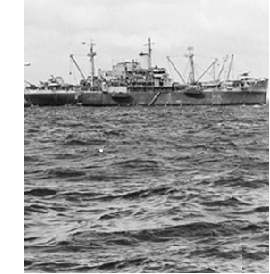
 Pre-dawn June 6, 1944. Aboard ship, Platoon leader, First Lieutenant Theodore Sinclar Treharne was waiting to debark. H-Hour: 6:30 AM.
Pre-dawn June 6, 1944. Aboard ship, Platoon leader, First Lieutenant Theodore Sinclar Treharne was waiting to debark. H-Hour: 6:30 AM.
At the base of the Cotentin Peninsula lay the isolated area that would forever be known by its code name: Utah Beach. Enclosed by a concrete seawall, Utah Beach was a three mile long span of gray sand -- protected by German machine gun nests, minefields, barbed wire, and steel obstacles. Behind the seawall loomed 10-25 feet high sand dunes. Beyond the dunes lay miles of river lock-flooded farmland terrain: hazardous marshes, shallow lakes, and treacherous deep pools.
A veteran of 20 mile endurance marches and inter-unit battles under live fire on Palen Pass in the Mojave Desert, a veteran of water hazards and beach landing assault under live fire at the Achnacarry Castle Commando Training Center, a trainer himself at the West Virginia Maneuver Area, Lt Treharne was now attached to the US Army 4th Infantry Division under the command of Major General Raymond O. Barton.
Commanded by Major General "Lightning Joe" Collins, VII Corps, the entire Utah Beach seaborn invasion force was 23,000 men strong.
13,000 men in the 82nd and 101st US Airborne Divisions were already parachuting into Normandy, while in cramped quarters, Lt Treharne‘s platoon waited for a flotilla of landing craft to be lowered into the water. At 5:50 AM, Navy warships would begin pre-landing bombardment of enemy fortifications on Utah Beach.
